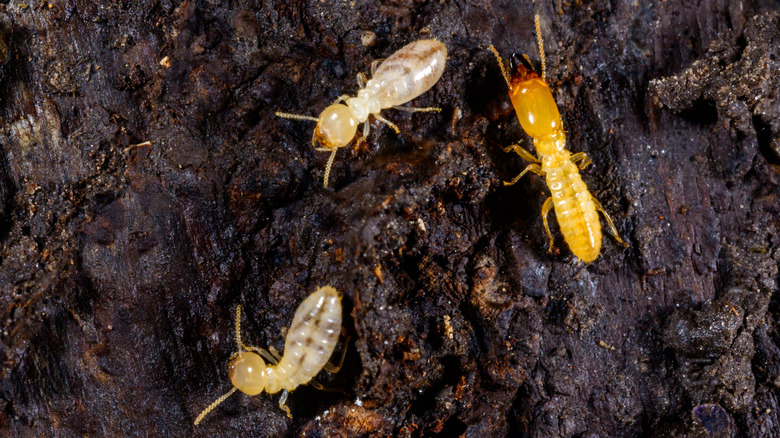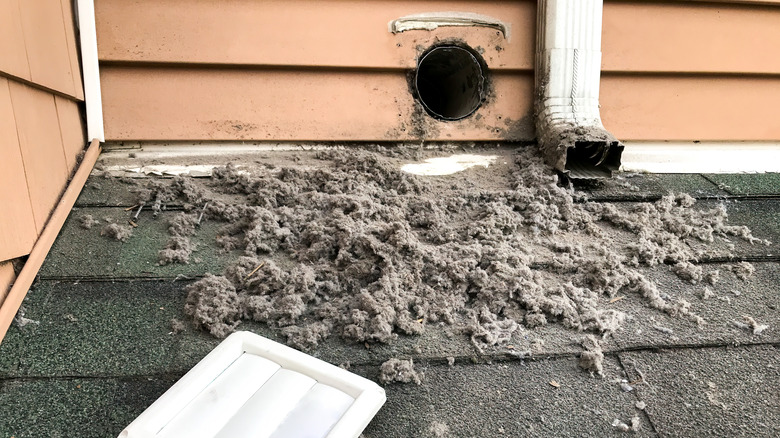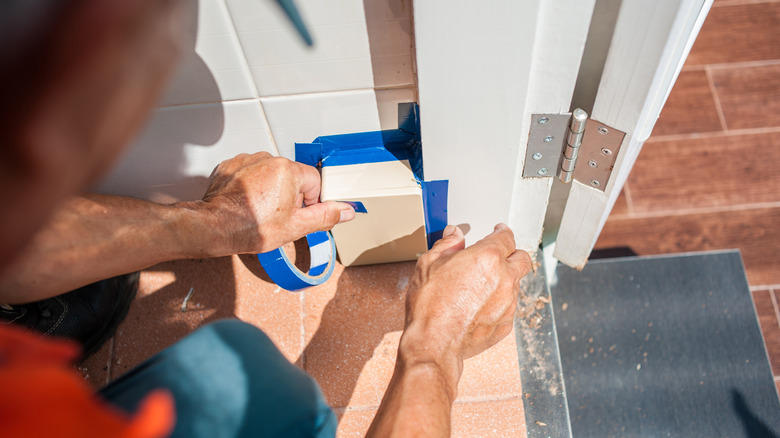Termites Love This Overlooked Entry Point On Homes — Do You Know Where It Is?
Wood-boring termites are one of the most dangerous infestations you could find in your home. Termites are capable of causing costly damage every year in America by feeding on wood, paper, insulation, and filtration systems. These pests will often appear en masse in the springtime, drawn out by warmer temperatures and rain, and they can appear at any number of locations around your home. Dead or live termite swarmers can be found inside the house on places like your windowsill, near the building's foundation (or in surrounding trees and wood piles), and you might find mud tubes trailing around pipes or high walls, both interior and exterior. However, you should also be checking your dryer vents for signs of termite activity.
Traditional dryers work by heating your clothes to release all of the moisture as vapor, which is then vented out the back and replaced by an ongoing cycle of dry air. Venting the dryer into any part of your home can lead to issues with condensation and mold, which is why it should always be pumped outside rather than into areas like your home's crawl spaces. Mold isn't the only thing to be concerned about, as this venting process generates exactly the kind of heat and moisture that attracts termites. There are key ways to get rid of termites, but tackling them at entry points before infestations get too serious is the way to go when protecting your home.
Be vigilant for signs of termite infestations around your clothes dryer
Maintaining your home's infrastructure and keeping your living spaces clean and dry is the best way to nip termite infestations in the bud. Another reason why clothing dryer vents attract termites is that they not only produce conditions of heat and moisture, but also leave behind lint that termites will eat. Termites will eat just about any source of cellulose they can find. Lint traps in the dryer itself will only catch so much, and you need to clear them regularly to avoid excess fluff building up that might overheat the appliance. Improper ventilation may also create other problems in the home, like lowering the effectiveness of insulation.
A chief problem with termite infestations is that it can take years to actually detect any damage, given that their nests are often hidden within wooden walls or underneath your home's foundation. A full, mature colony of termites may take a whole year just to eat through a 2-foot length of 2-by-4 wood. By the time you find some surefire signs of a termite infestation, it may already be too late, as your floors might begin to sag or your wall's paint starts to bubble up, causing further damage to the structure that more termites can take advantage of.
How to deal with a termite infestation in your dryer vent and beyond
Whether you find termites coming in through the dryer vent or other areas like your windowsill, there are two main treatment types: liquids and baits. Liquid termicides are designed to spray a barrier around your home and the surrounding soil, many of which today offer more permanent, reliable deterrents by killing off whatever pests are repelled. Spot treatments are going to be less effective, given that termite colonies are large enough for individuals to spread, which means you should rely less on homebrew methods of pest control. However, once the termites are gone, you can focus on other preventative methods, such as growing non-invasive plants that will keep termites away from the barrier of your garden — consider vetiver grass, for example.
The other main termite treatment method, baiting, could be particularly useful if you have an infestation around your dryer vent. Termite baits are small packets of cellulose food laced with slow-acting toxins that ensure individual pests will bring a lethal time bomb back to their colony, killing off its members from the inside. Burying these packets in targeted locations can help deal a solid blow to termite numbers, especially in conjunction with liquid termicides. Leaving bait by the vent to your laundry room is a great way to address the security issue with this overlooked termite entry point, and once they've all been cleared out, you can put in some work on pest-proofing every part of your home.


